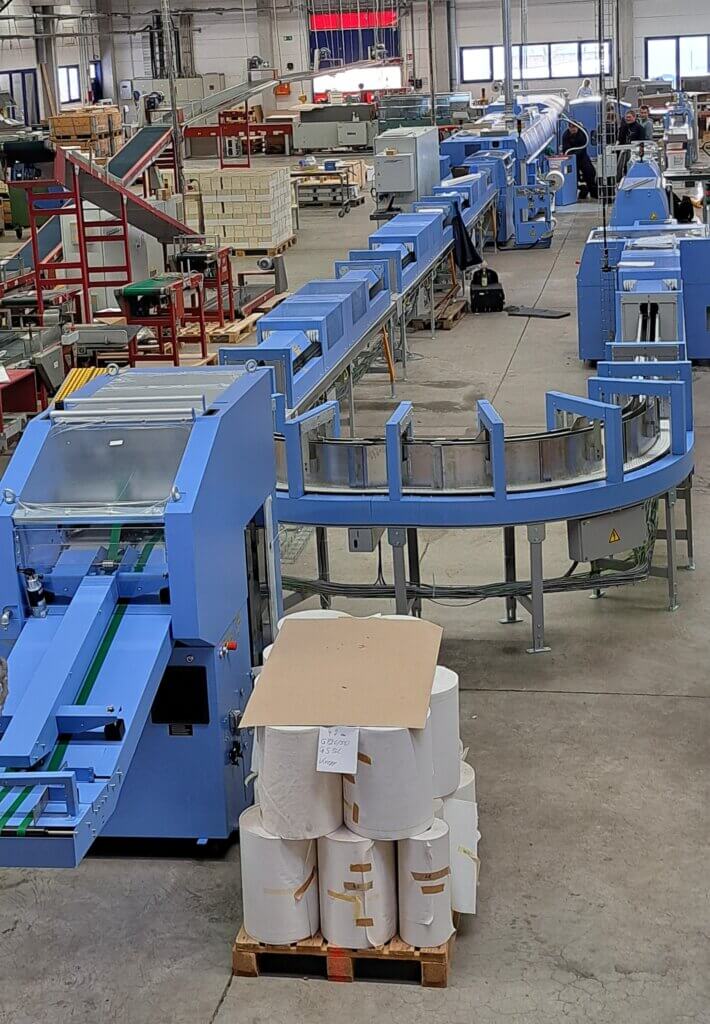How is a book made? Many children have certainly asked themselves this question before. But instead of just reading about it, the after-school children from Hufeland Primary School and Thamsbrück Primary School were able to experience the entire process at first hand. During their visit to Beltz Grafische Betriebe, they immersed themselves in the world of printing and bookbinding – from huge stacks of paper to making their own little book.
During the exciting tour, the children learned how white sheets of paper are turned into colorful printed pages and what steps are necessary to turn them into a finished book. They were able to playfully discover how printing machines work, why paper is folded and how a book is bound. An experience that not only generated enthusiasm, but also offered an insight into a traditional craft.
The contents at a glance
A look inside the print shop: the first part of the tour
From the stack of paper to the printed sheet
At the beginning of the tour, the children were amazed: in search of answers to the question “How is a book made?”, they discovered huge stacks of paper, machines several meters high and lots of colors in the Beltz Grafische Betriebe print shop. But how does the type actually get onto the paper? Step by step, it was explained how a digital template is turned into a real print. The children learned that each page has to be precisely aligned and given the right mix of colors before the large machines print it.
The topic of colors and printing techniques also generated a lot of curiosity. Illustrative examples were used to show how colors mix, why CMYK is used in printing and the differences between offset and digital printing. A real highlight was that the children were also allowed to carry out small experiments.
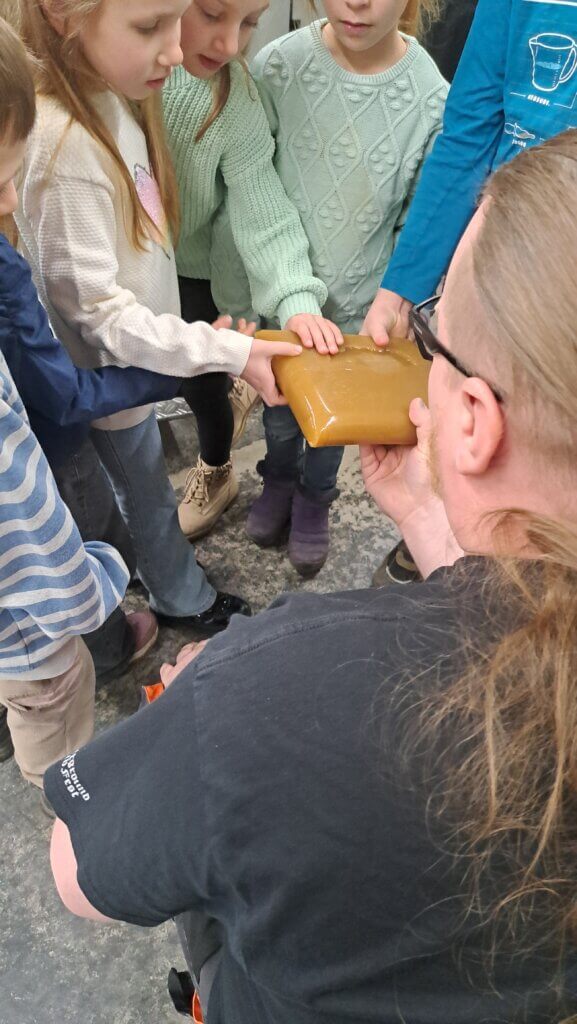
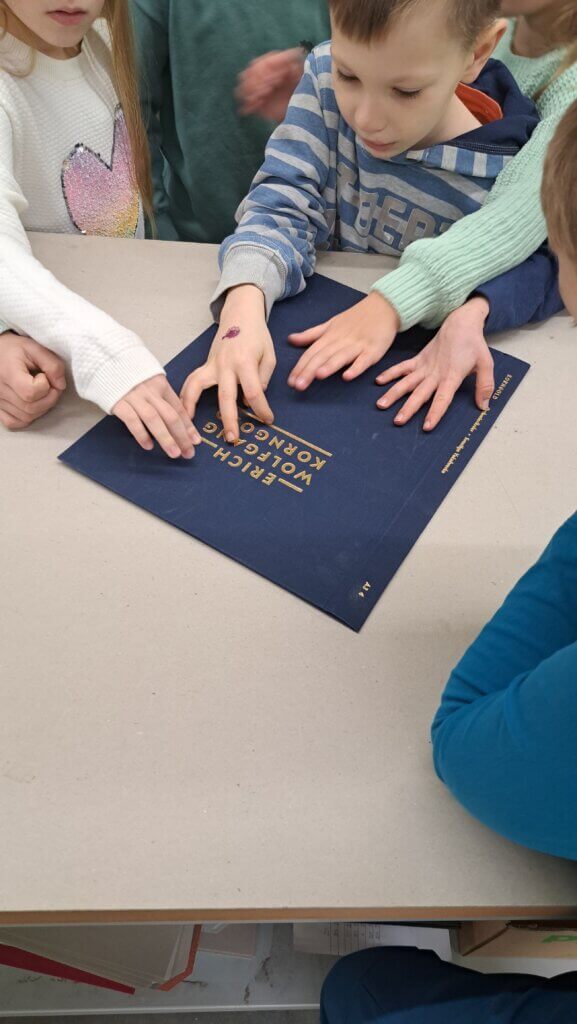
Large machines, bright colors and exciting experiments
The theory was followed by practice: the children were allowed to take a look at the gigantic printing machines and experience live how a printing process works. In the next step of answering the question “How is a book made?”, they watched as the paper ran through the machines, ink was applied and the first printed pages came out of the printer. The speed at which the machines worked was particularly impressive – it was hard to believe that entire sheets were printed in just a few seconds!
But it wasn’t just exciting to watch. The children were able to try out small color samples themselves and experience how different printing effects are created. Whether neon colors, embossing or glossy coatings – the variety of possibilities made their eyes light up and many curious questions were asked. An exciting first insight into the world of book printing!
The kids in the print shop – you can find more insights into an exciting and educational day on our Instagram channel. Just click on the icon.
On to the bookbindery: how to turn printed sheets into a book
Folding, stitching, gluing – the steps to book production
After the impressions from the print shop, the children moved on to the bookbindery – the place where printed pages are turned into a finished book and the answers to the questions “How is a book made?” are no longer so far away. Here they learned that printing is just the beginning and that there are many more steps before a book can really be held in the hands.
The folding of the printed sheets was particularly exciting – an important step to ensure that the pages are put together in the correct order. They were then shown how pages are joined together by stitching or gluing and what differences there are between different types of binding. The children were able to see that not all books are processed in the same way – some have a flexible cover, others a sturdy hardcover.
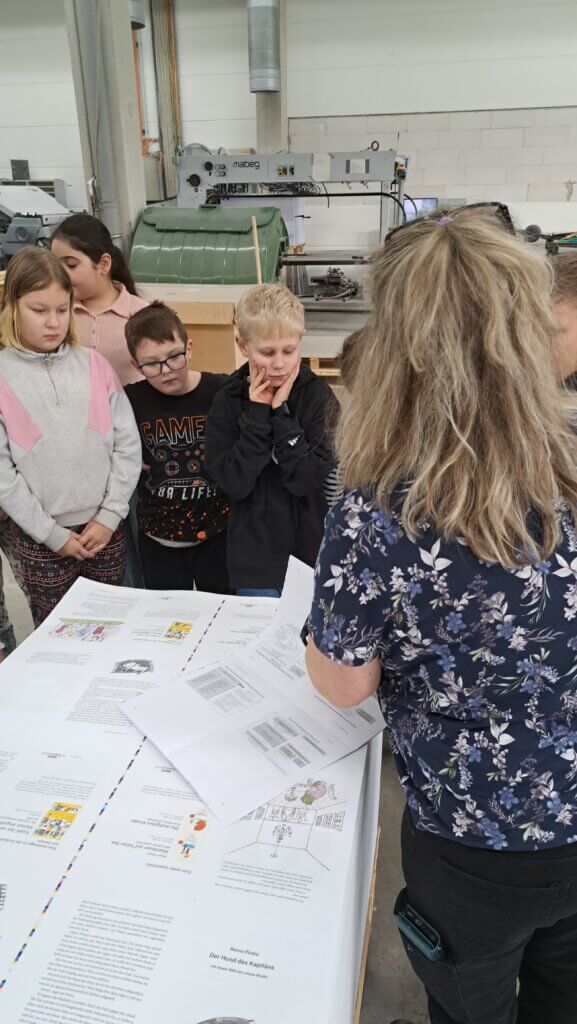
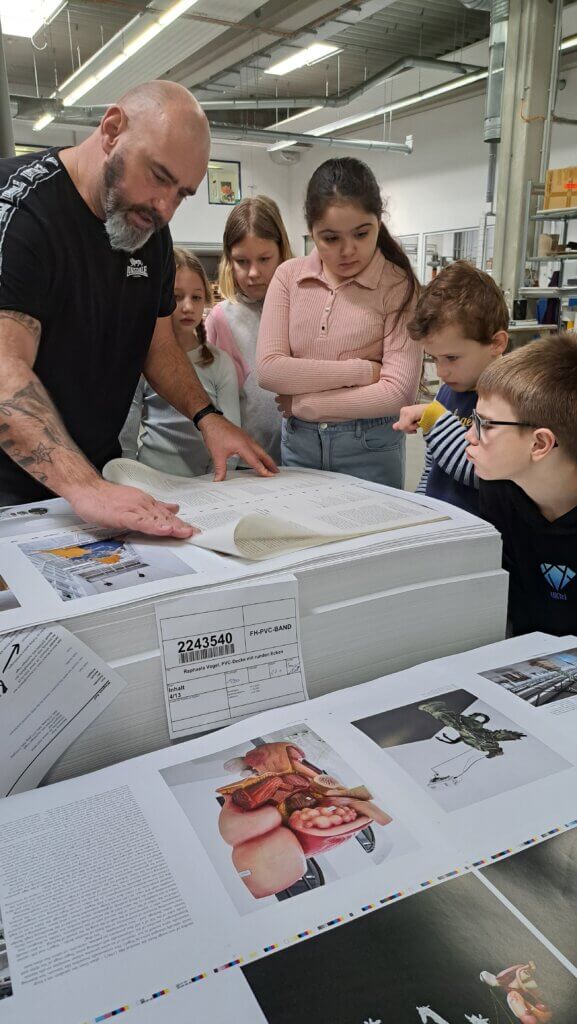
The highlight: the children make their own little flipbook
After so many impressions, the children got creative themselves: they were allowed to bind their own little flipbook! To do this, we prepared a template consisting of a sheet that is folded and then “tied” with a thread. A small flip book was created on the pages.
In contrast to conventional book production, the process was of course simplified. However, this did not detract from the children’s pride when they held their own little flipbook in their hands. It was a special experience, as they were able to experience what they had just learned for themselves and better answer the question “How is a book made?
The first self-bound copy – a great souvenir of the day in the print shop. Many immediately wanted to know if they could come back to discover even more. The enthusiasm was great – and that shows just how exciting and fascinating the world of book printing can be!
The kids in the bookbindery – you can find more insights into an exciting and instructive day on our Instagram channel. Simply click on the symbol.
Education meets practice: why such visits are important
Children are curious by nature – they want to know how things work, how they are made and why they are the way they are. A visit to the print shop gives them exactly this opportunity: they experience first-hand how a book is created and learn about the various stages of production. This direct experience means that knowledge doesn’t just remain abstract, but becomes tangible and understandable.
Such hands-on experiences are particularly valuable because they not only offer children an insight into a traditional craft, but also show them how diverse the media industry is. Many of them read books or use printed materials every day, but only a few know how much technology, precision and work goes into it.
In addition, such tours can also arouse interest in future professions. Whether media technology, media design or bookbinding – there are many exciting apprenticeships in the printing industry that combine tradition with state-of-the-art technology. Especially in times of digitalization, it is important to show young people that print products continue to play a major role and that skilled trades have a future.
Beltz Graphic Arts would like to continue this concept and also offer other school classes and children’s groups the opportunity to discover the print shop and bookbindery. So if you are looking for an exciting and educational excursion destination, you can contact Beltz directly and plan a guided tour. You too can embark on the exciting journey of the question “How is a book made?
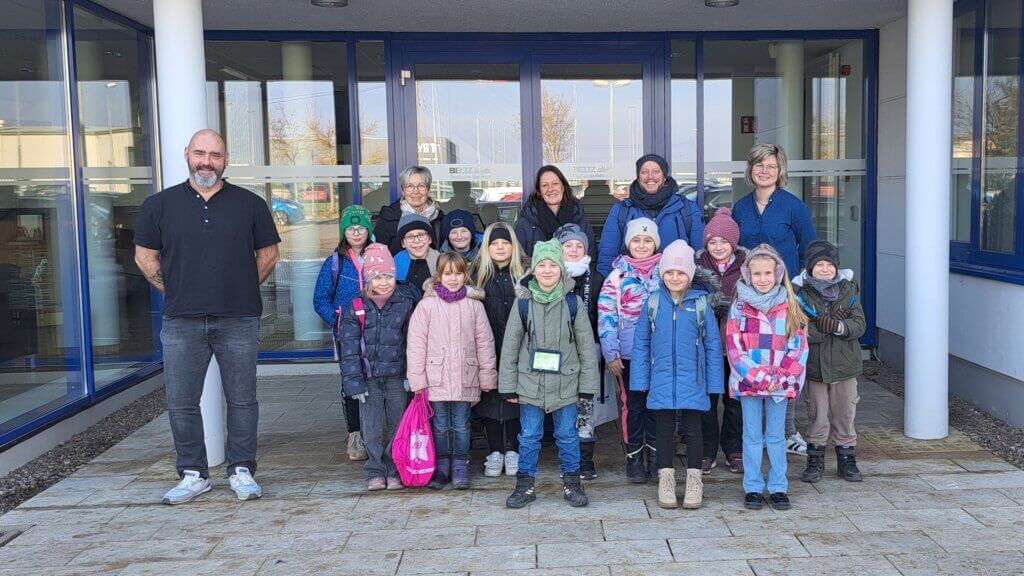
The diverse answers to the question “How is a book made?” aroused the enthusiasm of the young visitors
The after-school children’s visit to Beltz Grafische Betriebe showed how exciting and informative a look behind the scenes at a print shop can be. From the first printed sheet to the finished book – the children were able to experience the entire production process up close and produce their own flipbook.
Such experiences not only create a better understanding of book production, but also awaken enthusiasm for the printed book. Beltz would also like to offer other children’s groups this opportunity in the future. Would you like to answer the question “How is a book made?” with your school class or after-school group and gain exciting insights into our company? Together we will find a suitable date on which we can plan your desired tour. Please contact us using the contact form on our website.
